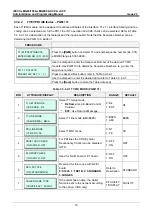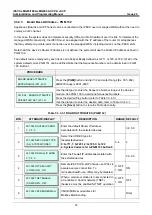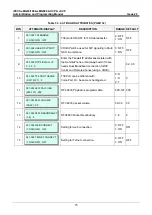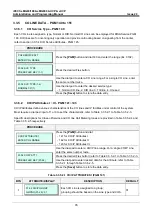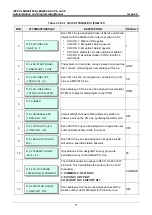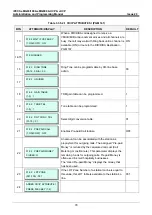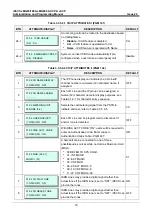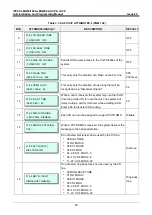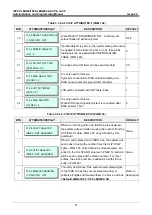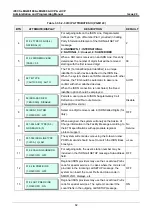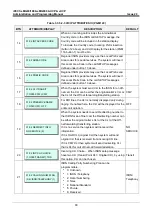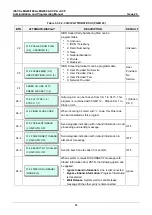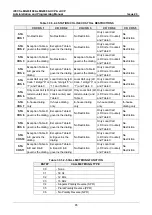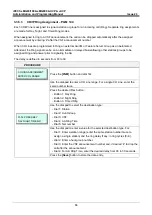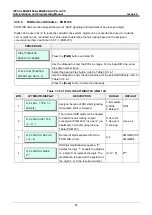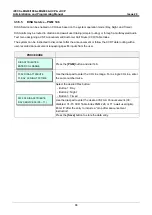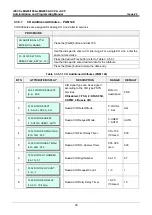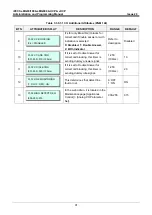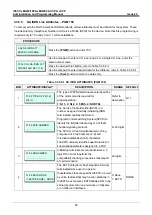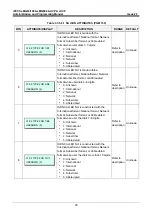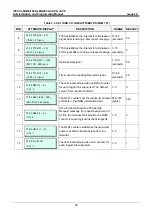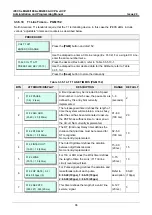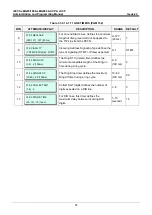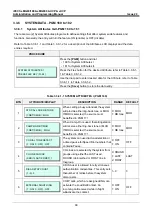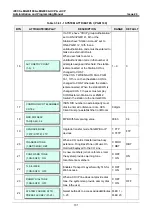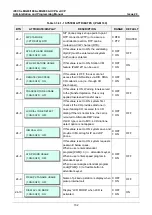
iPECS eMG80/100& eMG800 & UCP & vUCP
Administration and Programming Manual
Issue 2.3
87
3.3.5.4
DID Service Attributes
– PGM 145
PSTN DID lines can be assigned the type of “Start” signaling and treatment of any received digits.
Digits can be used “as is” to route the call within the system, digits can be converted and used to route the
call, or digits can be converted to a Table index to determine the call routing based on the assigned
conversion method, see Table 3.3.9.7-1 (PGM 231).
PROCEDURE
DID ATTRIBUTES
ENTER COL RANGE
Press the
[PGM]
button and dial 145.
01-02 DID ATTRIBUTES
PRESS FLEX KEY(1
–4)
Use the dial-pad to enter the DID Line range. For a single DID Line, enter
the same number twice.
Select the desired Flex button; refer to Table 3.3.5.4-1.
Use the dial-pad to enter the desired value for the selected Attribute, refer to
Table 3.3.5.4-1.
Press the
[Save]
button to store the data entry.
Table 3.3.5.4-1 DID LINE ATTRIBUTES (PGM 145)
BTN
ATTRIBUTE/DISPLAY
DESCRIPTION
RANGE
DEFAULT
1
01-02 SIG. TYPE: 1-3
WINK (2)
Assigns the type of DID start signaling,
Immediate, Wink or Delayed.
1: Immediate
2: Wink
3: Delayed
Wink
2
01-02 DID CONV TYPE
(0
– 2) : 1
The received DID digits can be treated
to determine call routing, simple
conversion (PGM
230), “use as is” (no
treatment), or modify using look-up
Table (PGM 231).
0: Convert
1: Use as is
2: Look-up
Use as is
3
01-02 DID DGT RCV NO
3 (2
– 4)
Number of digits expected from the
PSTN DID circuit.
2~4
eMG80/100:3
eMG800:4
4
01-02 DID DGT MASK
#***
DID digit modification sequence: “#”
deletes the digit, “*” accepts the digit as
is, a digit (0~9) replaces the digit. The
modification is based on the position of
the digit (1~4) in the received number.
(0~9, *, #)
#***

